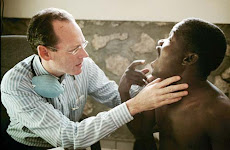http://docs.google.com/Doc?id=dgs5z555_652g437r3c5
The task involves two parts:
A. Review material from general biology by purchasing a Kaplan's SAT II biology review book
and by taking practice test at this site:
http://www.nysedregents.org/testing/scire/sciarch/arcbio.html
The review book and practice test are meant to be a review of your first biology class that you may have taken your freshmen year. During the first week of school you will have a practice biology test which will serve as a pre-test to test what you remember about your first biology class.
B. Read the The Beak of the Finch by Jonathan Weiner over the summer.
1. Take notes while you read.
2. Answer the questions below on a separate piece of paper.
3. Questions are due by the end of the first week of school.
4. Be prepared for a discussion and quiz of the book the second week of school.
Chapter 1
1. What measurements do the Grants take on each finch?
2. How does Darwin describe natural selection?
3. Did Darwin ever observe natural selection in action?
4. Why did Darwin believe we could never "watch" natural selection in action?
5. Why are the finches on Daphne Island such an ideal population to study?
Chapter 2
1. How many species of finch are found in the Galápagos?
2. Why are the Galápagos finches referred to as nature's "most famous toolkit?"
3. What hints do we have that Linné wondered about evolution?
4. How did Charles Lyell's Principles of Geology influence Darwin?
5. How did John Gould's discovery that there were 14 (13) species of finches on the Galápagos help spark Darwin's revolutionary ideas?
6. Why did Darwin begin the Origin with a detailed description of pigeon breeding?
Chapter 3
1. Why might "Barnacle Bill" have been a good nickname for Charles Darwin?
2. What is Darwin's explanation for the lack of transitional forms between species?
3. Describe the large, medium, and small ground finches with respect to their beaks. What kind of adaptations do you think the finches' beaks represent?
4. How does the variation in populations of Darwin's finches compare with variation among populations of other birds, like sparrows?
5. Why is the study of variation so important to evolutionary biology?
Chapter 4
1. Why did 19th and early 20th century biologists fail to recognize the importance of variation in beak size among Darwin's finches in the Galápagos?
2. How did David Lack's observation of the distribution of finch species in the Galápagos lead him to conclude that natural selection had indeed been at work?
3. How did the finches' feeding behavior change during the dry season?
4. What are the three requirements of Darwin's theory of natural selection that are found in populations of Darwin's finches?
Chapter 5
1. How did the drought of 1977 affect the feeding behavior of finches on Daphne Island?
2. Why didn't the Grants and Peter Boag and Laurene Ratcliffe immediately recognize the episode of natural selection at work during the drought?
3. How did natural selection change the morphology of the finch populations on Daphne Island from 1977 to 1978?
Chapter 6
1. Discuss the "costs and benefits" of black plumage among male Darwin's finches?
2. Provide a "cost-benefit analysis" of John Endler's guppies of South America with respect to their colorful spots.
3. Describe Endler's "natural" selection experiments with guppies. What did he show?
Chapter 7
1. What was the selection response in the aftermath of El Niño on Darwin's finches?
2. How have biologists reconciled the apparent paradox of rapid evolution in the short term with much slower evolutionary rates measured in the fossil record?
3. Do the results on natural selection in Darwin's finches and British Columbian sparrows change your view of a species? If so, how?
Chapter 8
1. Compare the success of finch hybrids before the El Niño of 1983 with those hatched afterwards.
Chapter 9
1. Why does Peter Grant describe evolution as "change in variation?"
2. Why was there so much debate over whether natural selection could give rise to new species?
Chapter 10
1. What are Darwin's "incipient species?"
2. What is adaptive radiation?
3. How did Darwin imagine the "principle of divergence" would lead to new species?
4. What is meant by competitive exclusion? Character displacement?
5. How do Dolph Schluter's findings support the theory of character displacement?
6. What is meant by an adaptive landscape?
Chapter 11
1. What are the "invisible coasts" described in this chapter?
2. In what ways are species more "fluid" than even 20th century biologists might have believed? To what extent was Darwin's description of species as "convenient constructions" accurate? Are species real?
Chapter 12
1. Do Benkman's and Lindholm's research on crossbills support the notion that gradual evolution can lead to the appearance of complex adaptations? Explain.
2. How are the stickleback fishes in British Columbian lakes studied by Dolph Schluter and John Donald McPhail similar to Darwin's finches?
Chapter 13
1. How have the finch populations on Daphne Major responded to the changing adaptive landscape?
2. How might hybridization aid in a species' shift to a new adaptive peak in the landscape?
Chapter 14
1. What role does inductive reasoning play in science?
Chapter 15
1. What does Peter Boag hope to find by analyzing finch DNA?
Chapter 16
1. Does the observation of haw flies and apple maggot flies support the notion of sympatric speciation? Explain.
Chapter 17
1. What is introgressive hybridization and what role might it play in evolution?
Chapter 18
1. Joshua Ledergerg said, "Our only real competition for domination of the planet remains the viruses." In what respect could you make a similar argument about insects?
Chapter 19
1. What affect would global warming have on the ground finches of the Galápagos? Explain.
2. Weiner suggests that we live in extraordinary times, evolutionarily speaking. Do you agree? Why or why not?
Chapter 20
1. In what way(s) is cultural evolution similar to "regular" evolution? How is it distinctly different?
2. How has cultural evolution affected the success of our species?
Epilogue
1. "The thinking niche is taken…” Do you agree? Explain your answer.
Questions adapted from http://raider.muc.edu/~scottjj/courses/bi215/finchquestions.htm and http://www.jdenuno.com/APBiology/SummerSBS.doc#question.
Email me with any questions: marymfagan@hotmail.com




No comments:
Post a Comment